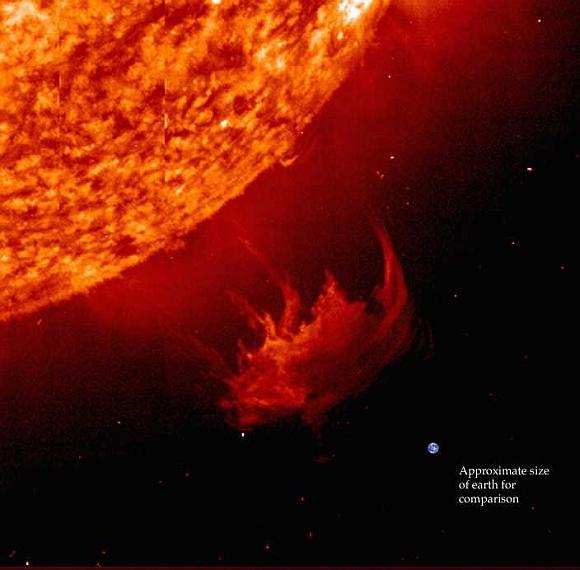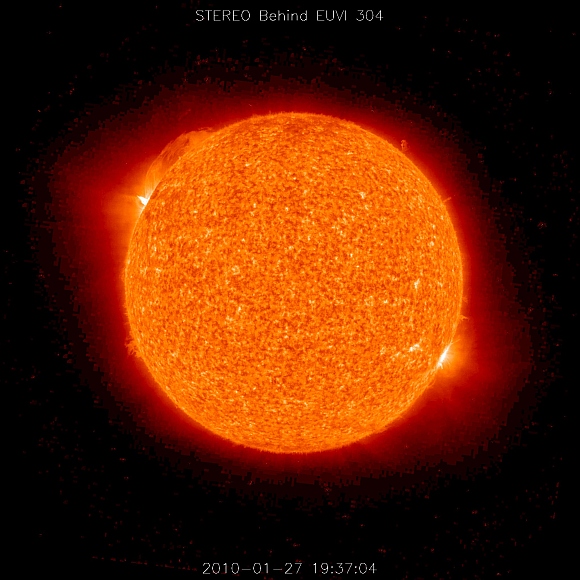
A strong follow-up solar flare, which cropped up on Friday, just days after the Sun launched the biggest coronal mass ejection seen in almost a decade, delivered a powerful radiation punch to Earth's magnetic field even though it was targetted away from our planet, a new study including Indian origin scientist has revealed.
University of New Hampshire scientists currently studying and modelling various aspects of solar radiation said that this was due to both the existing population of energetic particles launched by the first CME and a powerful magnetic connection that reeled particles in towards Earth from the Sun's blast region, which had spun to an oblique angle.
"Energetic particles can sneak around the 'corner,' as was the case in Friday's event when it was launched at the Sun's limb, or edge," said astrophysicist Harlan Spence, director of the UNH Institute for the Study of Earth, Oceans, and Space and principal investigator for the Cosmic Ray Telescope for the Effects of Radiation instrument onboard NASA's Lunar Reconnaissance Orbiter mission.
CRaTER is designed to measure and characterise aspects of the deep space radiation environment.
...

Space weather events can disrupt earth-based power grids, satellites that operate global positioning systems and other devices, can lead to some rerouting of flights over the polar regions, and pose severe risk to astronauts beyond low-earth orbit.
The first explosion, which occurred Monday, Jan. 23, 2012, fell just short of being rated an X-class flare -- the most powerful type of solar storm. When Friday's X-flare exploded from the same sunspot region that was the source of the week's earlier blast, the Sun's west limb was pointing away from earth.
Nonetheless, the resulting high-energy protons that speed toward Earth even faster than the four-million-mile-per-hour solar wind demonstrated that dangerous "space weather" can affect us even when the planet is not in the direct path.
Click NEXT to read further...

"The magnetic field lines on which energetic particles travel curve from the Sun to Earth unlike CMEs, which travel in straight lines. In the case of the second flare, energetic particles were magnetically connected to Earth even though the second CME from this active region missed us entirely," explained Madhulika Guhathakurta, lead program scientist of National Aeronautics and Space Administration's Living with a Star program.
"And the situation was worsened, from the standpoint of radiation, because there was a pre-existing energetic particle population, from the first CME, when the second one arrived," Spence added.
CRaTER's primary goal has been to characterise the global lunar radiation environment and its biological impacts. It does so by measuring galactic and solar cosmic radiation from behind a "human tissue-equivalent" plastic. During the two and a half years the LRO mission has been making measurements, the latest solar events are the most significant with respect to incoming radiation.